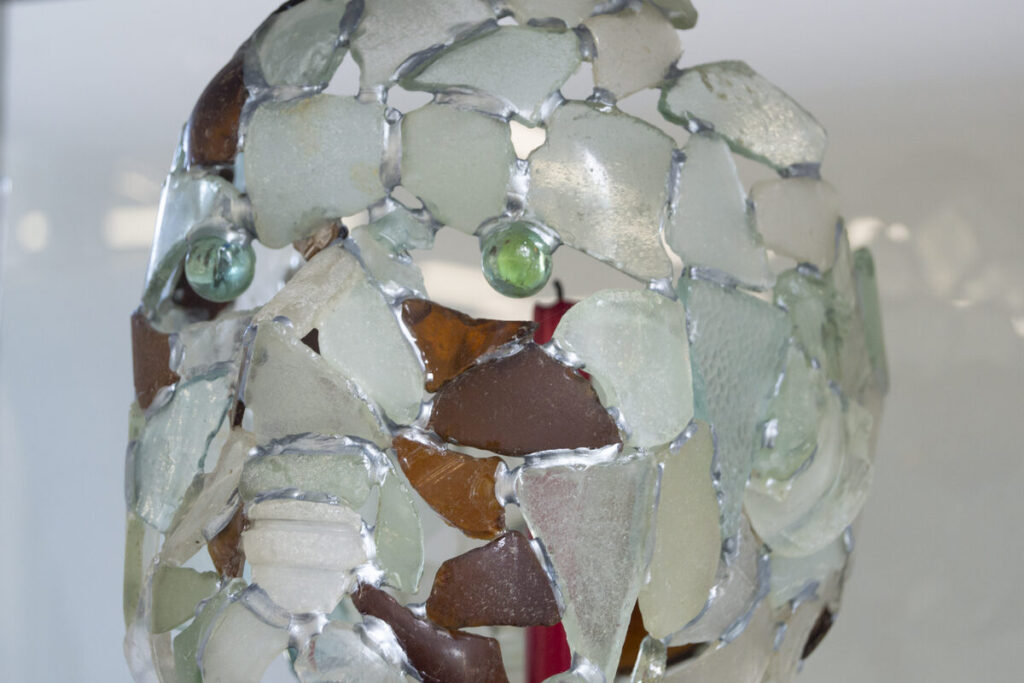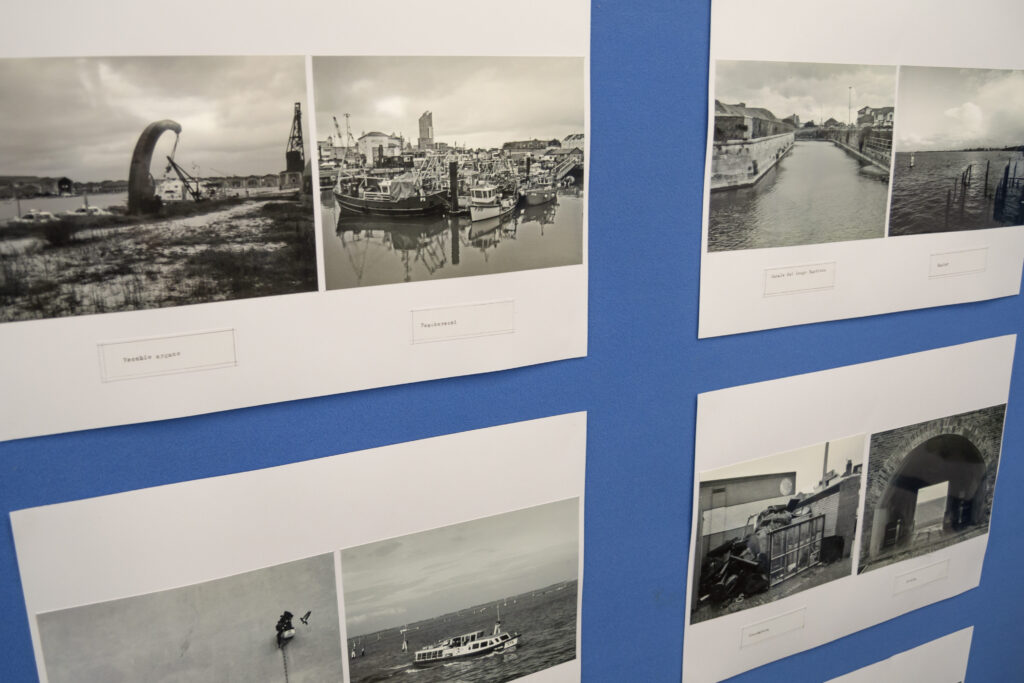Art of glass and beyond

We are lucky enough to have local artist and Senior Teaching Fellow in Nursing at the University of Portsmouth, Simon Holliday is displaying two imaginative exhibits of his imaginative work, both related, either directly or indirectly, to the local landscape. Come see them in all their glory on the first floor landing!
Members of the public are welcome but please bring photographic ID and sign in at Reception during staffed hours. Full details are available on our website.
I’ll let the artist introduce his work in his own words.
Art of glass

Art of Glass is probably best described as a body of sculptural work which I’ve been constructing using found objects. The project is born out of my habitual tendency towards beachcombing. In particular, this tendency to collect objects of interest from the shoreline around Hampshire. The pebbles and mud around Southampton Water, the River Hamble and Portsmouth Harbour where I most often go beachcombing are rich sources of human rubbish. And within me there resides that childish tendency to pick up and then like a magpie, to want to keep and hoard all of the curious objects that I find. Everything that sparkles and shines, everything unusual, or things that become repetitive and collectable… glass and pottery, tiles, rope, cigarette lighters, toys, bones, fossils, and when I’m lucky… clay-pipes or stone-age tools.
Therefore, within this work there is an element of indulging that inner child who would have been told, “No, you can’t bring that home! Throw it away!” As an adult, I’ve given myself permission – and space in my garage – to bring those things home, to collect, to sort, to esteem and value – to reuse and recycle. The glass has been a natural and obvious material to work with because of its inherent beauty, tactility, translucency and form. Sometimes, the shapes of the broken fragments have inspired the works, or sometimes, the works have developed organically or experimentally.
The Serenissima of the South Coast
Walking the landscape and looking at the human artefacts as a method of exploring and understanding contemporary culture, society and politics is an approach which links the beachcombing of Art of Glass with the other project that I have chosen to exhibit: The Serenissima of the South Coast. This photographic project was inspired and informed by two significant influences: The writer (and University Teacher) W.G. Sebald and the American land artist, Robert Smithson.
I became interested in Smithson’s work for a short time at Art School, particularly enjoying the discovery that Smithson had produced – alongside his famous monumental artwork – Spiral Jetty – many avant-garde and experimental written works. The one that immediately sparked my imagination was his article entitled A Tour of the Monuments of Passaic, New Jersey. which was published in Artforum magazine in 1967.
Referring now to my other muse, the writer W.G. Sebald, who wrote extensively (one might say obsessively) around the idea of European post-imperial decline and the attendant social and psychological catastrophes that have been contingent upon this decline, the comparison between Portsmouth and Venice might be better understood. The power and wealth of the Venetian empire, built upon the strength and domination of the Venetian fleet in the Adriatic and Mediterranean Seas has in its decline yielded to the world this totem of melancholy, artistic inspiration: home to a wealth of museums, historic churches, restaurants, cafes and contemporary art-galleries. The great culturefest of the Venice Biennale is held within Venice’s very own equivalent of Portsmouth Historic Dockyard, the Arsenale di Venezia.
Passaic was Robert Smithson’s hometown. The article describes a journey and a walking tour of Passaic that Smithson took with his camera one day in September of that year. Taking photos of the various mundane buildings and objects – a bridge, water pipes, a sandbox – photos which were then included within the text, with irony Smithson analyses the unmonumental nature of his home town and at one point asks the question: “Has Passaic replaced Rome as the new Eternal City?”
This, in turn, has led me to ask: Has Portsmouth replaced Venice as the new Serenissima?

From this point of view, I wondered if perhaps in five hundred years’ time, the spiritual home of Britain’s naval power, and cornerstone of the British empire, might also become a melancholic museum capital of British cultural history surrounded by the sea? The foundations are in place: the Mary Rose and HMS Victory, the Palmerston Forts, the Guildhall. With global warming threatening an ever rising sea-level, perhaps in those years to come, the residents of Portsmouth too might even need to experience the wellies and duck-boards of acqua alta, much as the residents of Venice do today.




Leave a Comment (note: all comments are moderated)